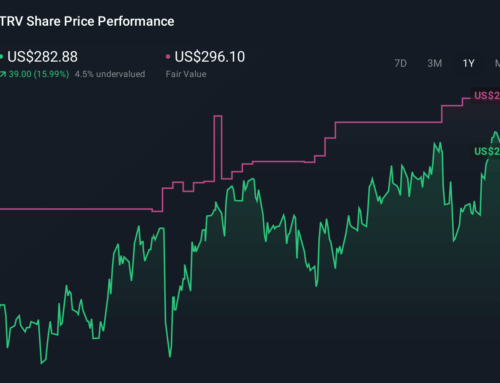Spain and Portugal’s Blackout: Is Renewable Energy Part of the Story?
April 29, 2025
The Iberian blackout reflects Europe’s need for stronger grid connections and expanded storage capabilities to keep pace with renewable growth.
A massive power outage on April 28, 2025, interrupted daily life across Spain, Portugal, and parts of France. The blackout, which started around 12:30 pm local time, stopped subway and train operations, closed airports in Lisbon, Madrid, and Barcelona, disabled traffic lights, and disrupted phone and ATM services throughout the Iberian Peninsula. Just prior to the blackout, Spain’s electricity network website showed a steep drop in demand from 27,500 megawatts (MW) to about 15,000 MW. Spain’s nuclear safety council confirmed that the country’s nuclear reactors are in “safe condition” despite the outage and that emergency generators have kicked in.
Between Spain and Portugal, the two countries have over fifty million inhabitants, though the exact number impacted is not yet known. Authorities believe power should largely be restored within six to ten hours, however, full normalization of grid operations could take as long as a week. French grid operator RTE is helping to restore power, already resupplying 700 MW, and will increase aid as the Iberian grid is able to receive it.
The cause of the outage has not yet been confirmed, though Antonio Costa, President of the European Council, and Portugal’s Prime Minister, Luis Montenegro, have emphasized that there are no indications of a cyberattack at this point. Portugal’s grid operator, REN, attributed the supply interruptions to a “fault in the Spanish electricity grid” related to a “rare atmospheric phenomenon” caused by extreme temperature variations. Both REN and Spain’s power grid operator, Red Eléctrica, reported that a “strong oscillation in the electrical network” caused Spain’s grid to disconnect from the broader European system.
Preliminary data suggests that a voltage imbalance may have been responsible, with Portugal’s Minister of the Presidency, António Leitão Amaro, connecting the imbalance to issues with Spain’s distribution network. Portugal’s distributor E-Redes similarly pointed to problems within the European grid, noting that selective power cuts were needed to stabilize the system. Pedro Sánchez, the Prime Minister of Spain, warned against speculation and said that the exact cause of the blackout is still unknown. Determining the actual cause of the outage will likely take months.
The ongoing blackout is reminiscent of a similar crisis almost two decades ago, when a high-voltage transmission line in Germany was shut down to allow a ship to pass safely. This led to a network overload that caused fifteen million people to temporarily lose power throughout Europe. Following the incident, the European Commission called for enhanced cross-border grid coordination, real-time data sharing, and infrastructure modernization investments. Similarly, in 2021, a wildfire close to transmission lines cut off the Iberian Peninsula from the European grid. Even though there has been some progress made since these incidents and Russia’s invasion of Ukraine has brought energy security back into the spotlight, it is clear that vulnerabilities still exist, especially as the continent’s energy system becomes more renewable-dependent.
Spain’s Renewable Energy Milestone
The blackout came just days after Spain announced a major clean energy achievement. On April 16, 2025, Spain’s national grid operated entirely on renewable energy, meeting demand during a weekday. Solar, wind, and hydro power made up the bulk of the generation, with wind generating 256 gigawatt hours (GWh), solar 151 GWh, and hydro 129 GWh. Solar thermal and other renewables added an additional 22 GWh. A few days later, solar power set a new record, covering almost seventy-seven percent of demand and contributing roughly sixty-two percent of the overall grid mix.
While this is an impressive accomplishment, the success reveals emerging risks. Solar power only produces energy during daylight hours. Peak generation around midday often does not align with peak electricity demand, which typically rises in the evening. As Spain and other countries install more solar capacity, they face what experts call the “duck curve”—a deep midday surplus followed by a steep ramp-up in demand after sunset. While initially observed in California, forecasts for 2030 show this curve could become more of a “canyon curve.” Without adequate balancing mechanisms, these fluctuations can strain grid stability and increase the risk of supply-demand mismatches, especially in an interconnected and aging system.
Regional Vulnerabilities in the European Grid
The Iberian Peninsula blackout also points to long-standing challenges in Europe’s grid structure. With 600 million customers served by thirty-nine national operators, the European power network is the world’s largest interconnected grid. While its high degree of interconnection has enabled power exchange and supply flexibility, much of the infrastructure is aging: the average component is forty years old, and over sixty percent of physical assets are in need of repair or modernization. Upgrading the grid is estimated to require a $654 billion investment, with another 700 to 800 gigawatts (GW) of renewable energy added to the grid by the end of this decade.
Spain and Portugal are especially vulnerable. Despite the two countries’ electricity markets being connected over ninety-five percent of the time, the Iberian Peninsula is an “energy island,” poorly connected to the rest of Europe. As of 2022, Spain and France shared only 2.8 GW of interconnection capacity, and Spain’s total cross-border capacity with the Central European network was close to 3000 MW, far below the European Commission’s fifteen percent target of interconnection by 2030. The current lack of connection means that the rest of Europe is unable to benefit from solar power being generated in the Iberian Peninsula, Spain and Portugal are less able to support nearby countries experiencing grid disruptions, and broader European energy security efforts are undermined.
But Europe is working to address these problems. The High-Level Working Group on Interconnections for South-West Europe is monitoring current infrastructure projects and identifying new opportunities to strengthen regional connectivity. Ongoing projects to connect Spain and France include a 2200 MW submarine cable across the Bay of Biscay, a 1500 MW connection between Navarra and Landes, and another 1500 MW connection between Aragon and Masillon—all together contributing 5200 MW of capacity by 2030.
Renewable Energy Growth is Outpacing Storage Solutions
While the true cause of the blackout won’t be known for quite a while, the grid’s increased levels of renewable energy will likely face backlash. As Spain deepens its clean energy transition, the growing dominance of solar, wind, and other renewable sources is creating new operational pressures on the grid. Wider swings in supply and demand are a likely pressure from solar and wind. Already in 2024, Spain began experiencing negative price hours exceeding those in the UK, which is a common signal that more renewable energy is being produced and is exceeding demand, and that current storage capabilities are insufficient.
Battery storage is a key solution to managing renewable variability. Yet, Spain lags behind its European peers. As of 2025, Spain has only 60 MW of battery energy storage system (BESS) capacity, whereas the UK has 5.6 GW and Italy has 1 GW, despite the projected storage needs of the three being similar. While Spain is a leader in overall installed storage—largely due to its 6.3 GW of hydroelectric and 1 GW of thermal capacity—large-scale battery development has been slow. This is partly due to Spain’s traditional storage resources reducing the immediate need for battery investments, and partly because regulatory frameworks to support deployment have lagged. However, increasing battery storage remains essential as it maximizes the use of renewable energy, stabilizes market prices, and reduces the need for backup plants.
Spain, in recognizing the need for greater flexibility to integrate renewable generation, has raised its overall energy storage target to 22.5 GW by 2030 under its National Energy and Climate Plan (NECP). But substantial investment and regulatory reform will be needed to meet these energy storage goals. Until then, Spain’s grid is still largely dependent on conventional storage, and there is pressure on it to integrate growing amounts of renewable energy without disruption.
Broader Implications for Europe
The blackout in Spain and Portugal is not just a regional issue. It also poses a threat to Europe’s clean energy transition and its energy security agenda. A key component to Europe’s plan to increase autonomy is speeding up the transition to renewable energy, but doing so necessitates parallel investments in grid modernization, flexible storage options, and increased interconnections among member states.
The success of the green transition, like Spain’s renewable energy milestone, could turn into a new source of risk in the absence of resilient infrastructure. Europe needs to address the management, storage, and transportation of its power in addition to how it is generated.
About the Author: Emily Day
Emily Day is an experienced researcher, writer, and editor with expertise in geopolitics, nuclear energy, and global security. She is an Associate Editor of Energy World at the National Interest, a Della Ratta Energy and Global Security Fellow at the Partnership for Global Security, and a Research Associate at Longview Global Advisors, where she provides insights on global political and economic trends with a specialization in utilities, risk, sustainability, and technology.
Emily holds a Master of Science in International Security from Georgia Institute of Technology, where she focused on nuclear proliferation and emerging technologies, as well as European and Transatlantic Affairs. She also holds a Bachelor of Arts in Political Science and History from John Carroll University. Her research has explored the intersection of nuclear energy and climate goals, global leadership in arms control negotiations, and the evolution of international safeguards.
Image: Petrmalinak/Shutterstock
Search
RECENT PRESS RELEASES
Related Post



